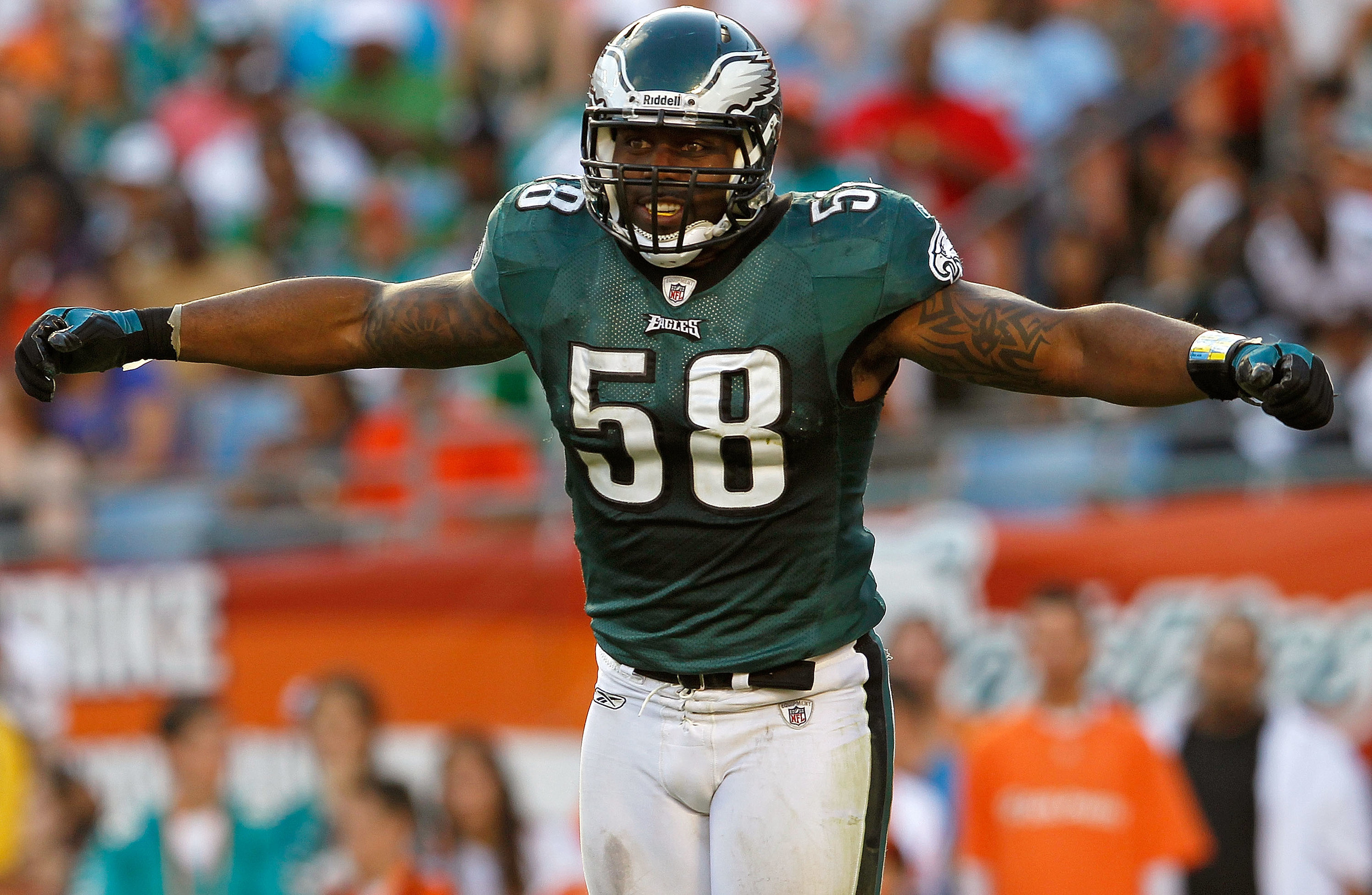In Chip Kelly's second press conference in Philadelphia, he told us that he liked the 3-4 defense best, but that scheme flexibility was of the major reasons he hired defensive coordinator Billy Davis:
What we're going to do is put our guys in the best position for them to make plays. I don't know if that's being a 3-4 team, a 4-3 team, a 5-2, a 6-1 team. I know we could add up at the numbers to see where we are. We're also not caught up in that. It's about making sure we play sound defense on first, second and third down. We could look drastically different on first and second downs than third downs. And that's going to be entirely personnel-driven for us. Could it be a 4-3 under defense? Yeah, or it could be a 3-4 under defense.
Since saying that, Kelly and Howie Roseman have added new pieces to the mix. Isaac Sopoaga can immediately step in at nose tackle. Connor Barwin is a starting outside linebacker. These are important steps in the direction of a 3-4, or a 4-3 under defense (as discussed previously). But which is it? Does it matter? What's the direction to take this year, even if it's only a stopgap measure? The key to answering those questions is in the sudden surplus of pass rushers the Eagles seem to have between Barwin, Trent Cole, and Brandon Graham. Here are their numbers from Pro Football Focus, including the last two years for Barwin:
Before we get into ramifications for the defense, let's discuss each player in turn. Graham wasn't a full time starter last season, although only Andy Reid knows why. When he was on the field he was an absolute beast in every phase. Graham put up the highest Pass Rush Productivity mark of any defensive end in the league. He was also a top run defender -- ranking third out of the top 37 qualifying players in tackle and stop percentage.
Cole's performance was mixed in 2012. Despite being slightly undersized, he has always been solid against the run. That seems to have held up in his age 30 season. His run defense percentages were nearly as good as Graham's. But Cole definitely suffered a decline in his pass rush. From 2009-2011, he ranked seventh, third, and first respectively in PRP. This year he dropped to 18th. That still put him in the top half of 4-3 defensive ends, but only barely.
Finally we get to the newcomer Barwin. Truthfully, his numbers aren't pretty. As a 3-4 OLB, he was classified differently than Cole or Graham, but he didn't impress compared to his peers. Even during his 11 sack season in 2011, he was only middle of the road in total PRP, suggesting that the sacks may have been a lucky break despite less actual pressure. Barwin was also a subpar run stopper.
So can all three coexist at outside linebacker in a standard 3-4? That's going to be tough. Based on these stats, Graham needs to be on the field at all times, no matter what the role. Barwin wasn't signed to be a backup, either. He needs to be slotted in as pass rushing OLB. Where does that leave Cole? In a world where his contract wasn't so large, it probably leads to his trade. But if he's staying, it's silly to see him backing up a (worse) player like Barwin. And Cole's potentially-declining pass rush doesn't lend itself to a specialist role either.
What if the answer is relatively simple -- Cole goes back to playing more or less his old position of defensive end, but in the new 4-3 under scheme? He's no prototypical 5-technique defensive end, but Cole works there if you think more about the player and less about a rigid scheme. First, he's still great against the run, which is that player's primary job. Second, it allows him to keep his hand on the ground, rather than convert to a stand-up linebacker in his ninth season. Third, it keeps the team's best personnel in the game, and actually aids scheme flexibility. (Tinfoil theory: if Vinny Curry is bulking up to compete at DE rather than slimming down for OLB, that could be hinting at this move.)
As you can see from the numbers above, both Barwin and Cole played the vast majority of their snaps on the right side. Set them up on that side again, with Cole as the DE and Barwin as SAM. Across the formation, Sopoaga is the nose tackle on run downs, with Fletcher Cox is the penetrating 3-technique defensive tackle. Graham, hopefully your star, mans the "Predator" DE/OLB spot on the left -- where he lined up all of last year.
Because offensive alignments will shift, the defense won't necessarily have clear strongside-weakside assignments, but it will have flexible pass rushing duos. Graham + Cox and Cole + Barwin are dangerous pairings for an offense to handle. Whether Graham or Barwin are standing up or putting their hands on the ground doesn't really matter, they should both get one-on-one matchups on the outside when rushing the passer.
If Kelly was telling the truth about crafting the defense to fit his players, this is the direction he should head. Rather than forcing Cole to convert positions and sit on the bench, keep him where he's comfortable. In a year or two, after you've groomed young backups, you can revisit whether you need to replace Cole with a more traditional 3-4 end. Until then, live those "personnel-driven" words you preach.
Photo from Getty.

